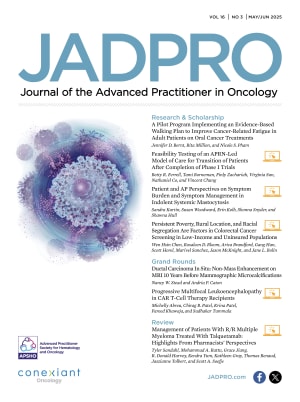Initial US Approval:
2025
Key Clinical Studies:
MC-FludT.14/L Trial II (NCT00822393)
Drug Class/Description:
Alkylating drug
WARNING: MYELOSUPPRESSION
See full prescribing information for complete boxed warning.
- GRAFAPEX causes severe and prolonged myelosuppression.
- Hematopoietic stem cell transplantation is required to prevent potentially fatal complications of the prolonged myelosuppression. Monitor hematologic laboratory parameters.
Indications and Usage:
- Use in combination with fludarabine as a preparative regimen for allogeneic hematopoietic stem cell transplantation (alloHSCT) in adult and pediatric patients 1 year of age and older with acute myeloid leukemia (AML).
- Use in combination with fludarabine as a preparative regimen for allogeneic hematopoietic stem cell transplantation in adult and pediatric patients 1 year of age and older with myelodysplastic syndrome (MDS).
Dosage Administration:
Recommended dosage: 10 g/m² body surface area (BSA) per day as a 2-hour intravenous infusion, given on 3 consecutive days (day -4, -3, -2) in conjunction with fludarabine before hematopoietic stem cell infusion (day 0).
- See Full Prescribing Information for instructions on preparation and administration.
Dosage Forms and Strengths:
For injection: 1 g/vial and 5 g/vial treosulfan as a lyophilized powder in a single-dose vial.
Contraindications:
Hypersensitivity to any component of the drug product.
Warnings and Precautions:
- Seizures: Monitor signs of neurological adverse reactions and consider clonazepam prophylaxis for patients at higher risk.
- Skin Disorders: Keep skin clean and dry on days of Grafapex infusion and change occlusive dressings after infusion. Change diapers frequently during the 12 hours after each infusion of Grafapex.
- Injection Site Reactions and Tissue Necrosis: May cause local tissue necrosis and injection site reactions, including erythema, pain, and swelling, in case of extravasation. If extravasation occurs, stop the infusion immediately and manage medically as required.
- Secondary Malignancies: There is an increased risk of a secondary malignancy with use of Grafapex.
- Increased Early Morbidity and Mortality at Dosages Higher than Recommended: Avoid exceeding the recommended dosage of 10 g/m2 daily for three consecutive days.
- Embryo-Fetal Toxicity: Can cause fetal harm. Advise patients of reproductive potential of the potential risk to a fetus and to use effective contraception
Adverse Reactions:
The most common adverse reactions (≥ 20%) are musculoskeletal pain, stomatitis, pyrexia, nausea, edema, infection, and vomiting. Selected Grade 3 or 4 nonhematological laboratory abnormalities are increased GGT, increased bilirubin, increased ALT, increased AST, and increased creatinine.
Drug Interactions:
- Certain CYP2C19 and CYP3A4 Substrates: Monitor for adverse reactions of these substrates where minimal concentration changes may lead to serious or life-threatening toxicities.
Use in Specific Populations:
- Lactation: Advise not to breastfeed.
Adapted from:
https://www.accessdata.fda.gov/drugsatfda_docs/label/2025/214759s000lbl.pdf
Every health-care provider should make their own determination regarding specific safe and appropriate patient care practices, including drug dosages and indications. The provider should always consult the most recent prescribing/product information. FDA Focus information is not guaranteed to be accurate, complete, or current. JADPRO and its editors, authors, reviewers, and commentators cannot be held responsible for any liability incurred as a consequence of the application of any of the information listed within.

